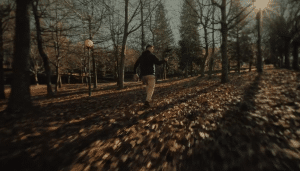From royalty free music to stock video (and everything in-between), pre-made assets are every creative’s friend.
Simply put, stock content is general-purpose content created to accommodate any project. Stock assets are an easy solution to the problem of sourcing media for projects, since copyright laws protect other creators’ intellectual property. Stock content is perfectly legal, readily available, affordable, and (usually) customizable. Anyone can purchase and use stock content for their projects, from individuals to corporations. Look around: stock content is everywhere, in the form of advertisements, news articles, and even in major studio films.

Types of Stock Content — and Where to Find It
Stock content comes in many forms, from video clips to vector illustrations. The platforms that license stock content make it a priority to help creators find the assets they need quickly and affordably, to be used as-is or edited and remixed.
Depending on your project, you might need stock images for an ad, stock video for a B-roll montage, stock templates for animated lower-thirds or infographics, or stock music for a video project. Whatever the case, stock assets are general-purpose media you can use in your projects without worrying about paying royalties or fair use copyright laws. In addition to royalty-free images, you can also find free and royalty-free stock assets — learn more about royalty-free assets. It’s an entirely legal, hassle-free solution to finishing your project under budget and on time.
Here are the types of stock content available online — and the platforms where you can find it.
Stock Images
Images are the most common stock content medium. They’re purposely generic to appeal to the widest possible audience of creators. If stock images look like the placeholders in picture frames, that’s likely because the placeholder is a stock image. That’s the kind of vibe you can expect, and it serves both photographers and clients well. That being said, there’s something of a dichotomy with stock photography; images are both generic-looking and highly specific in one very obvious way.

Photographers don’t know what a future client might look for, so the answer is to shoot as much as possible. That involves hiring actors to pose for images in various positions and settings, holding props, interacting with the environment, or any idea that could one day be the exact thing a client is searching for. Also, actors may pose alone, in duos, trios, or in groups that look like families or social gatherings. For photographers, the point is to cast a large net and hope that something bites. The result is images featuring people, or groups of people, engaged in mundane activities like watching TV or niche activities like chopping fruit shirtless.
On the client side, that means searching for highly specific scenarios and hoping to get lucky. For example, if you’re searching for an image featuring a couple of a certain age running a marathon, you might search “older couple running marathon.” You might not always find what you want, but you’d be surprised at the images on stock asset websites.
- Where to find (paid): iStock
- Where to find (free): Freepik Photos
Stock Music and Sound Effects
If there is one thing that content creators must know, it’s that using copyrighted music is a big no-no. YouTube, Twitch, and other video content platforms have been receiving immense pressure from record labels to go after offenders, which has led to suspensions, temporary bans, and demonetization. There is hardly any room for error. You can be in violation by using just a few seconds of a copyrighted song. If you’re a content creator who depends on ad revenue, the best choice is to use stock music.

The good thing is that stock music isn’t hard to find. The stock music industry has grown in recent years in response to the widespread crackdown on copyrighted music. Although you won’t find music from your favorite artist in stock music catalogs, you’ll likely find similar songs. So whether you’re looking for sound effects, lounge music, classic TV and film music, or a some relaxing new age, you can find the right sound without looking over your shoulder.
- Where to find (paid): Videvo (Premium library), Getty Music/Epidemic Sound
- Where to find (free): Videvo (free library), the YouTube Audio Library, Incompetech
Stock Video and Motion Graphics
Video and motion graphics are two other stock assets that are fairly common. When working on a video, whether it’s for YouTube or for marketing purposes, stock clips are incredibly useful for filling in the gaps. Sometimes, the shot you need is so brief that hiring a team to shoot it just wouldn’t be practical. In those cases, a stock clip can save you the hassle of hiring a crew, renting equipment, and paying for post-production. Like most other stock assets, stock video clips serve a large, general audience.
Stock video clips are great for B-roll montages, which is why you’ll notice many stock video clips are shots of locations. For example, they could be shots of nature landscapes, animals in the wild, time lapses of skies and cities, or business and medical settings. You get the idea.

One of the more popular types of stock footage is the bird’s-eye-view from a drone, which captures a city or landscape from above. These clips are a great example of the type of shot you can’t easily get unless you have professional equipment and a crew.
While stock footage is more common when it comes to video clips, motion graphics also belong to this category. Examples include countdowns, looping animations, dynamic backgrounds, abstract patterns, explosions, and others. These examples aren’t indicative of the entire library of motion graphics you can find on Videvo — there are many more motion graphics than we can list here.
If you have any experience working with an NLE, you understand how difficult and time-consuming it is to create motion graphics. The advantage of using stock motion graphics, if you know your way around motion graphics software, is the time you’ll save. That could be something as simple as using a stock motion graphic of glowing particles as a transparent layer above an intro. Though it’s something that you could create, it’s less time-consuming to purchase royalty-free stock motion graphics.
- Where to find (paid): Videvo (Premium library), iStock
- Where to find (free): Videvo (Free library), Mazwai, Vidfy
Stock Templates (Video Effects)
Stock templates are a sort of specialized motion graphic. These include assets like titles, lower-thirds, transitions, and other video effects. Like other stock assets, you can create these templates yourself if you have the time and the skill, but the available stock options more than likely already meet your exact need. Better yet, stock templates, as their name suggests, are customizable, so you can adjust them for your project.

Titles, typography, and lower-thirds are essentially the same thing. When used correctly, titles and lower-thirds make videos appear more professional. Little things like a slowly revealing title or a sliding lower-third in a modern font and color palette can make your video stand out. Use other effects templates like transitions, overlays, and infographics carefully, and you can raise the overall production value of your video.
Stock Vector Illustrations and 3D Assets
Graphic designers use stock vector illustrations to fill out their projects. Vector graphics or illustrations are comprised of shapes, such as lines, that designers can scale as large as they want without losing resolution. Thanks to this scalability, vector graphics can fill something as large as a billboard or something as small as a business card.
For graphic designers and illustrators, stock vector graphics can serve as the basis for a new design. Alternatively, designers can mix and match stock vector graphics, combining several different assets to complement a primary design. Like stock motion graphics, this allows creators to outsource smaller aspects of the design to focus on the bigger picture. Vector graphics can include fonts, icons, logos, textures, shapes, and even full illustrations.
On a similar note, there are also stock 3D assets for use in 3D rendering and animation software. Animators, video game designers, architects, product designers, and film VFX artists all use stock 3D assets in their projects. That might be in the form of stock 3D models of people, plants, cars, clothes, furniture, and much more.
Stock 3D assets can also come in the form of materials and textures, which can look and behave differently in 3D rendering software depending on the light source. Like every other stock asset on the market, stock 3D assets can be huge time savers.
- Where to find (paid): Blenderkit*, 3dstock, Turbosquid*, Unity*, Unreal Engine 5*
- Where to find (free): some free assets offered by sites with (*)
Cover image via Videvo.
Looking for more creative tips and tricks? Check these out.




